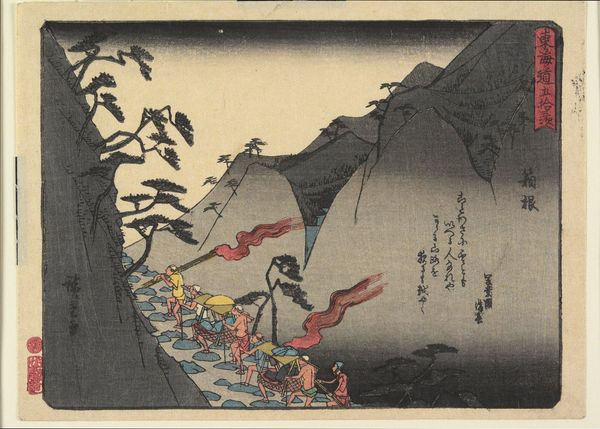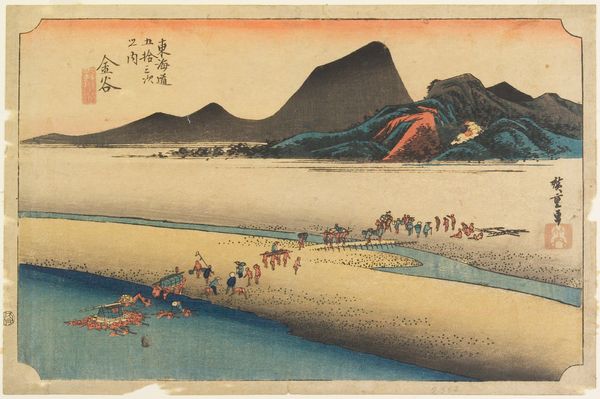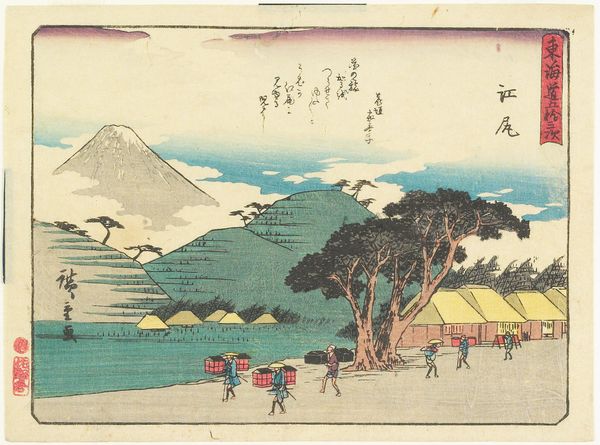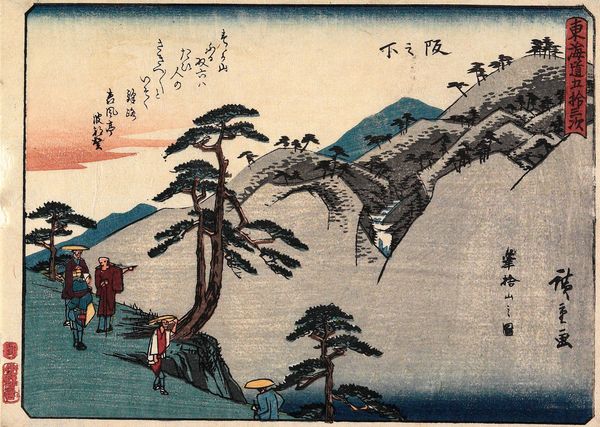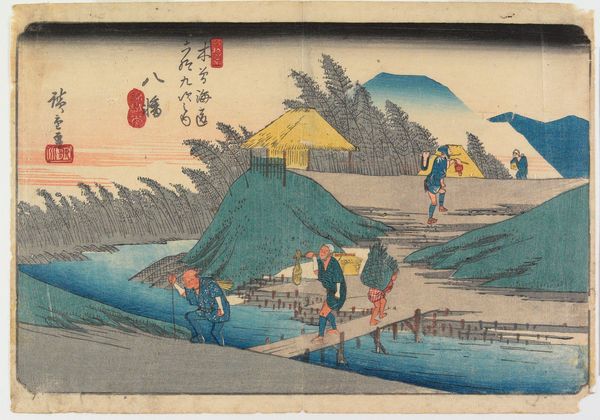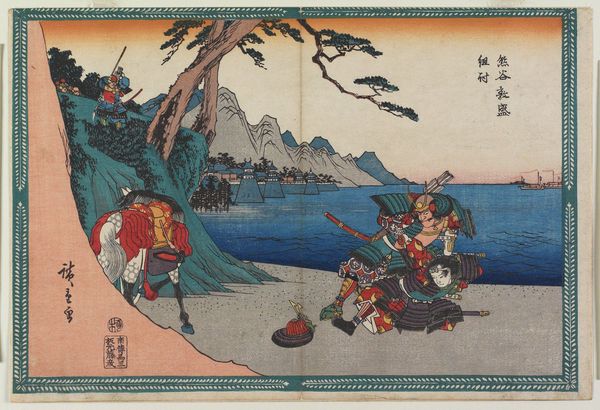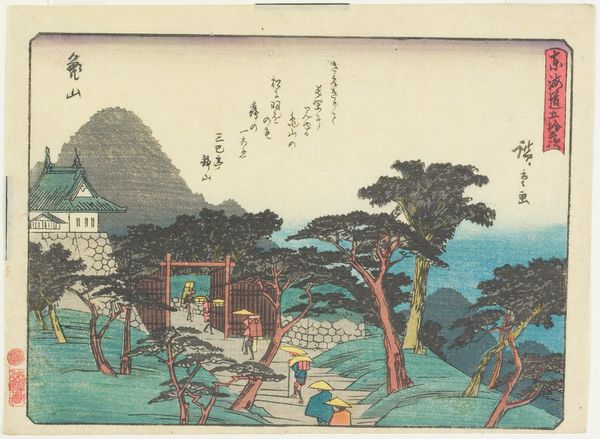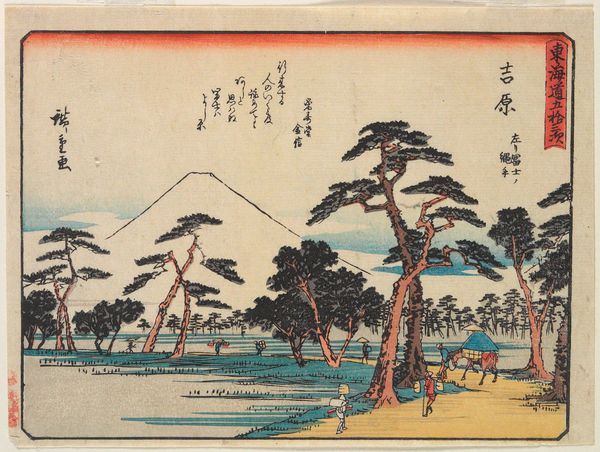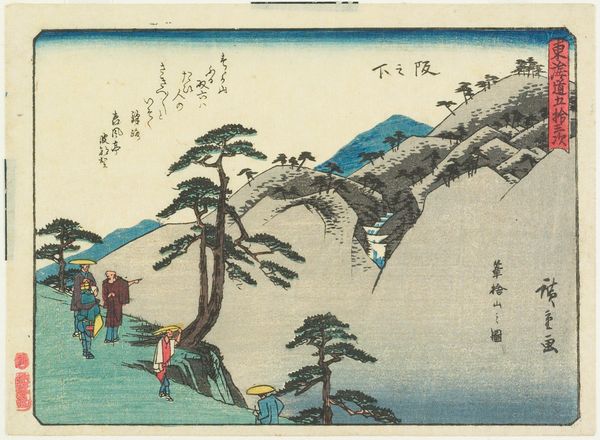
Nitta Yoshisada Praying to the Dragon God at Inamuragasaki Beach c. 1835 - 1839
0:00
0:00
print, ink, woodblock-print
#
narrative-art
# print
#
asian-art
#
landscape
#
ukiyo-e
#
japan
#
ink
#
woodblock-print
Dimensions: 9 5/8 × 14 1/8 in. (24.4 × 35.8 cm) (image, horizontal ōban)
Copyright: Public Domain
Editor: This is Utagawa Hiroshige’s woodblock print, “Nitta Yoshisada Praying to the Dragon God at Inamuragasaki Beach,” created around 1835-1839. The detail is striking, especially given the medium. I'm particularly drawn to how Hiroshige balances the vastness of the ocean with the activity on the shore. How do you interpret this composition? Curator: Notice the composition is structured to direct the viewer's eye through a sequence of carefully constructed visual elements. The print is divided into distinct zones of land, sea, and sky. The strong horizontal lines of the water are cleverly juxtaposed against the diagonal thrust of the coastline, aren’t they? It generates a compelling visual tension, and perhaps directs your attention to the implied narrative. Editor: I see that. So, the strategic placement of those compositional elements builds the narrative? Curator: Precisely. It's about more than just representation; it is about employing visual language to structure a narrative and control our experience of the scene. The receding lines of soldiers, leading toward the horizon, draw the viewer in, creating a sense of depth and suggesting the scale of Nitta Yoshisada's army. Ask yourself, what does this manipulation of space do for our understanding? Editor: It definitely gives the scene a feeling of great depth and significance. The way the landscape is treated makes the figures seem both powerful and humbled by their surroundings. Curator: A keen observation. In Japanese prints, notice the colors serve symbolic as well as aesthetic purposes, often indicating emotional states or natural forces at play. Considering the interplay of form and color, and how these function to tell the story of Nitta Yoshisada. This close reading enhances the work beyond pure decoration to that of historical drama. Editor: That makes so much sense. Paying attention to these elements gives you a much richer understanding of the artwork and artist intent. Curator: Precisely, and that acute analysis helps us appreciate art history.
Comments
No comments
Be the first to comment and join the conversation on the ultimate creative platform.

